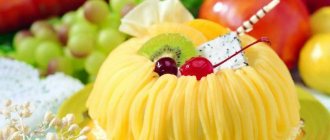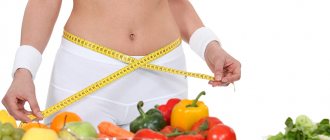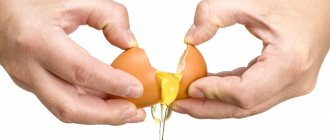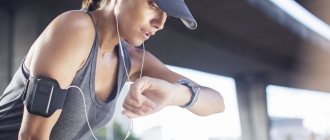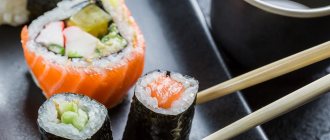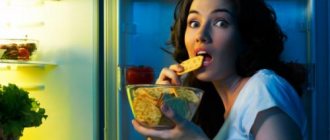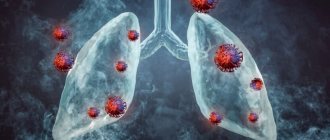A muscular, pumped-up body cannot be achieved without gaining muscle mass. You can build muscle if you have a well-chosen, correct menu. Training will not be important if there is no special material to work with.
For beginners, you need to prepare a daily menu that matches your goals. By building the basics of proper nutrition and creating an optimal diet, you can achieve quick results.
What a diet plan should include and what you need to gain weight will be discussed below in the article.
Basic diet rules for gaining muscle mass
During intense training and physical activity, a significant portion of energy is consumed. Costs are covered with food. By limiting your diet, a person will not receive enough substances necessary for weight gain.
The weight gain diet is based on one principle: you need to get more calories from food than you burn. Only by following this rule can you really achieve positive results.
You should also take into account the following several equally important menu rules for weight gain:
- Eat small meals. You need to eat 5-6 times a day. Portions are small. When eating a significant amount of food at one time, the body will not be able to digest all the nutrients. Some vitamins and minerals will be lost, and the muscles will not receive the required amount of energy on time. The rest of the nutrients will be stored in fat deposits.
- There are high-calorie foods. You should eat frequently, high-calorie foods - 70% of the daily diet. If you eat low-calorie foods, your body will not have enough energy. You will have to increase the number of meals, and the digestive organs will be overloaded.
- Limit the consumption of fast carbohydrates and fats. Consumption of such foods leads to an increase in body fat. Fast carbohydrates are flour products, sweets, baked goods, and candies. The calorie content of the food is high and is absorbed instantly. The body does not have time to quickly waste the energy received. Humans need animal fats in limited quantities. Lard and sausages consumed in excess contribute to an increase in fat deposits.
- Consume 2.5-3 liters of water per day. Rapid weight gain is stressful for the body. Accelerated metabolism and increased metabolism require large amounts of fluid. Lack of water will cause disruption of the digestive tract and worsen overall health. Also, with dehydration, muscles will stop growing.
- Receive 70% of calories before 16:00. Afterwards, eat proteins - cottage cheese, eggs, fish. Fast carbohydrates and fats are eaten before 12:00 and are acceptable before training.
- Diet of athletes. Professional athletes eat 2 hours before exercise and 1 hour after. You should eat as well. Constant training and an enhanced diet will accelerate the process of muscle growth.
- Compliance with the principle of the “food pyramid”: 60% – carbohydrates, proteins – 30%, fats – 10%. Most of the carbohydrates consumed are cereals, potatoes, and fruits. Proteins can be obtained from sports nutrition containing protein in the required quantities. Fats – vegetable, animal – in minimal quantities.
Bioimpedance analysis of body composition:
Below are some examples of basal metabolism.
- Tony Freeman is an IFBB professional. The performing athlete, despite his age (47 years old, 2014 data), is among the top 10 athletes in the world. Height 185 cm. Weight in the off-season 138 kg. Basal metabolism 3800 kcal. Daily diet 300-400 gr. protein, 500-800 gr. carbohydrates, 50-200 gr. fat Daily calorie content is about 5000 – 6000 kcal.[3]
- Your humble servant, the author of these lines. BB training at a professional level (6 training sessions per week), age 45 years (2014 data), height 175 cm, off-season weight 102-105 kg, competitive weight 92-93 kg. Basal metabolism 2800 kcal. Daily diet 300-350 gr. protein, 200-400 gr. carbohydrates, 50-80 grams of fat. Daily calorie content is about 3200 – 3500 Kcal.
- Here I would like to give an example from my practice. My ward is Peter, a 32-year-old man, height 180 cm, weight 102 kg. Has his own small business. She works out in the gym 2-3 times a week. Moderate lifestyle - driving to work, sedentary work. Meals are normal: breakfast, lunch, dinner. In general, Peter loves to eat, but for some time now he realized that this was affecting his appearance, and began to slightly limit his food intake. However, he is overweight and he came to me with exactly this problem. There really is a problem, because his measurements showed that Peter’s fat percentage is 32%. And this is neither more nor less than II degree of obesity!
First, Peter and I went the standard route and adjusted his diet. We increased the number of meals, shifted the balance of foods consumed from fats and carbohydrates to proteins, and introduced fat-burning, aerobic training. However, this did not give significant results. No, Peter is a very responsible person and followed all the instructions precisely, but in the fight against fat, fat won. The fact is that Peter’s 102 kg weight in a standard calculation (remember the calculated basal metabolism of 1 kcal/kg/day) assumed that his body would be able to “shovel” at least 2500 kcal per day. And then there are 2-3 workouts a week, plus aerobics, plus a proper diet!
I asked Peter to do a bioimpedance test to find out his basal metabolism. And what do you think? His basal metabolic rate was “only” 1900 kcal!!! Now imagine, he and his trainer (your humble servant) weigh the same, a little more than 100 kg. But the first has an exchange of 1900, and the second 2800 kcal!!! Those. if they eat the same food at the rate of, for example, 2500 kcal per day, then the first one will gain weight, and the second one will lose it!
This is an example of who can eat and how much! And with Peter, his problem was solved in a non-trivial way - they increased his basal metabolism, worked on his mass. With a slight increase in calorie content, we increased the working weights and decreased the repetitions (removed multiple repetitions). The results came - basal metabolism began to increase, which was recorded by new bioimpedance measurements. I must say that Peter was surprised by this “alignment”. Nonsense: work for mass and lose weight! But it is so. In fairness, it must be said that this will only work if there is a large imbalance in fat. Peter had it. Standard fat burning techniques involve reduced calories, high repetitions and aerobics - which after some time Peter and I returned to.
With this article I would like to convey the idea that you cannot blindly follow the diets of professionals. Moreover, they are not suitable for anyone unless you are also a professional! Calculate your caloric intake wisely. Exercise and eat well. But don't overeat. Big muscles need a lot of food. It's true! But simply eating a lot of food will not give you big muscles! Good luck and stay healthy!
Sources:
- Zaborova V.A., Polievsky S.A., Seluyanov V.N., Sarsania S.K., Semenov V.A., Gurevich K.G. "Energy supply and nutrition in sports"
- Educational and methodological manual, ed. V. A. Zaborovoy. - M.: Physical culture, 2011.-107 p.
- Volkov N.I., Nesen E.N., Osipenko A.A., Korsun S.N. “Biochemistry of muscle activity” Publisher: Olympic Literature, 2000. – 504
- E. Vilasquez (Musclemag magazine No. 4 2013) “Nutrition to increase strength” Publication: Hercules magazine No. 11, November 2018, pp. 12-17
Daily value of calories, proteins, fats and carbohydrates
Muscle growth will occur with regular training and sufficient energy. Sports supplements will not provide the optimal amount of calories. To restore the body's strength and increase muscle mass, you need to consume a significant amount of proteins, fats, and carbohydrates.
It is convenient to calculate your daily calorie intake using the Lyle MacDonald formula. To do this, you need to multiply your own weight by 35.
For example, for a guy weighing 70 kg: 70 x 35 = 2450 kcal. The data is based on a thin man with a fast metabolism. By adding 10-20% to the resulting value, you get the caloric intake for weight gain: 2450 x 1.2 = 2940 kcal.
By consuming 2940 kcal per day, the expended energy will be restored, and muscles will gradually increase.
For men
- Protein is the basis for muscle growth. With constant strength training, the daily protein intake will be 1.5-2.5 grams per 1 kg of body weight. Minimum – 150 grams per day. For a guy weighing 70 kg, 175 grams is enough. protein to speed up weight gain. Start with a smaller amount and gradually increase the dose. A sudden introduction of a large amount of protein into the diet will stress the body. Choose animal sources of protein with low fat content: chicken fillet, low-fat fish, low-fat cottage cheese, eggs. Vegetable proteins contained in beans, lentils, sesame are absorbed in full when consumed together with animals. After sports activities, you can drink a protein shake.
- Carbohydrates are a source of vitality; a deficiency leads to depression, apathy, and weakness. When eating to gain muscle, you need 5-6 grams per 1 kg of weight. For a thin man - 420 grams per day. Two hours before training, consume slow carbohydrates (buckwheat, oatmeal, rice), an hour before, an hour after - fast ones.
- Fats are 1-2 grams per 1 kg of weight. Fat intake also depends on age category. Maximum daily dose: up to 28 years – 160 g;
- 29–39 years old – 150 g;
- category 40+ – 70 g.
For women
- With intense training, the body requires more protein. Insufficient protein will affect the condition of the skin, hair, and nails. The minimum daily intake is 1.5 grams per 1 kg of weight: 50 kg – 75 g.
- 55 kg – 83 g.
- 60 kg – 90 g.
- up to 27 years – 118 g.
How to eat on 2000 calories
©Vasyl Dolmatov/IStock
The Food and Drug Administration considers the daily value of calories to be 2,000. This is the amount of nutrients most people need. So what does a 2,000 calorie diet look like?
Fruits and vegetables
If you're aiming to eat 2,000 calories a day, you'll need: 2 cups fruit, 2 1/2 cups vegetables.
What the daily norm might look like:
- 1 medium apple
- + 1 cup berries
- + 12 carrots
- + 1 cup cooked vegetables
Grains
If you're aiming to eat 2,000 calories a day, you'll need: 6 ounces of grain equivalents (1 ounce = 28 g).
What the daily norm might look like:
- 1 English muffin
- + 12 cm flatbread
- + 1 slice of bread
- + 1 cup rice
Low-fat dairy products
If you're aiming to eat 2,000 calories a day, you'll need: 3 cups of nonfat dairy.
What the daily norm might look like:
- 1 cup milk or soy milk
- + 1 glass of kefir
- + 1/3 cup grated cheese
Protein
If you're aiming to eat 2,000 calories a day, you'll need: 5 1/2 ounces equivalents.
What the daily norm might look like:
- 85g cooked salmon, chicken or beef
- + 12 pcs. almonds
- + 1/4 cup cooked beans
Trans fats and sugar
Ideally, give up sugar. But if you find it difficult to do this, stick to the daily limit recommended by experts. If you're aiming to eat 2,000 calories a day, you'll need: No more than 258 calories of these foods.
What the daily norm might look like:
- 60 g sweet bar or glazed donut
Oils and salt
If you're aiming to eat 2000 calories a day, you'll need: 27g butter and 2300mg salt.
What the daily norm might look like:
- 5 1/2 tsp. oils
- 1 tsp. table salt
The Best Foods for Gaining Muscle
An increase in muscle mass is associated with the frequency of meals, caloric content and quality of foods consumed. You cannot save money; an unbalanced diet will have a detrimental effect on the condition of the body as a whole.
Recommended to use:
- Beef is rich in iron, keratin, and protein. Ideal – 200 grams per day, 2 times 100 g.
- Chicken fillet, breast. 300 grams contain 69 g of protein, i.e. half the daily requirement. Use 2-3 times a day in portions.
- Salmon contains protein and amino acids. Promotes recovery after training, reduces muscle inflammation, helps monitor testosterone levels.
- Eggs . When gaining weight, they are second only to a protein shake. Protein is instantly absorbed, breaking down into amino acids. To create a balance between proteins and fats, you need to remove 4 yolks from 6 eggs. This omelet will give the body up to 30 grams of protein.
- Nuts . Mono fats increase the performance of the heart, internal organs, and ligaments. You need to eat about 55-60 grams of various nuts per day: almonds;
- walnuts;
- peanut;
- hazelnut;
- cashew nuts.
- potassium;
What should a 4000 calorie per day diet look like?
It can be quite easy to reach 4,000 calories a day if you consume unhealthy, "fast" foods, as they are loaded with calories and fat. However, eating that many calories every day on a healthy eating plan can be quite challenging since the volume of food that needs to be ingested is quite large. However, you should allow this to hinder you from achieving your goals.
You can use the following tips to help you eat this amount of food without feeling like you're stuffing yourself.
1. Eat less food throughout the day. While some people may find it easier to consume more and more calories from dense foods on the go, “newbies” may not be so comfortable. After all, not everyone wants to eat a 1,000-calorie shake in one sitting. Try eating high-calorie meals in five to six meals (or more per day) to prevent this.
2. Choose foods that are high in nutrients. 4000 doesn't mean you should treat yourself to all the pizzas and burgers you can find. Always choose nutrient-dense foods that are low in sugar, sodium, simple carbohydrates and unhealthy fats, as well as vitamins and minerals that help nourish and maintain health.
3. Drink more smoothies and cocktails. Sometimes it's easier to plan a 4,000-calorie-a-day menu by drinking it rather than eating it. Smoothies can be made using milk, fruits, nuts, green vegetables and seeds, making them healthy, calorie-dense and nutrient-dense.
4. Have another snack. But only if the snacks are healthy. Popular snacks include nuts, peanut butter, cheese, dried fruit and avocados.
5. Replenish your diet. Add some nuts and seeds to your salads, top your rice with an egg, add a little butter to your salad, use some cheese at meals, or make some soups with milk instead of water or broth.
Weekly menu for gaining muscle mass
Nutrition for muscle growth must be complete, high-quality, fractional. The diet consists of 3 main meals and 2 snacks.
Features of the menu for weight gain:
- Calorie content – 3000 kcal.
- Water – 3 liters/day.
- Avoid sweets.
An approximate menu option is presented in the table:
| Day of the week | Menu |
| Monday | Breakfast: oatmeal with apples, nuts, toast with cheese, tea. Snack: dried fruits. Lunch: chicken fillet, potatoes, vegetable salad, bread, butter. Afternoon snack: banana, cottage cheese. Dinner: baked salmon, rice, vegetable plate. 30 minutes before bedtime: kefir. |
| Tuesday | Breakfast: Buckwheat porridge with fruits, almonds, milk, bread. Snack: cottage cheese, sour cream, honey. Lunch: cabbage soup with beef, mackerel, baked with vegetables. Afternoon snack: homemade yogurt, bread. Dinner: boiled chicken breast, potatoes, vegetables. 30 minutes before bedtime: kefir. |
| Wednesday | Breakfast: rice milk porridge, 6 egg omelette. Snack: yogurt, raspberries. Lunch: stewed turkey fillet, durum pasta, butter, tomatoes. Afternoon snack: toast with cheese, cottage cheese with jam. Dinner: river trout, brown rice, vegetable salad, sour cream. 30 minutes before bedtime: milk. |
| Thursday | Breakfast: omelette, chicken fillet, steamed vegetables. Snack: smoothie made from milk, banana, strawberries, peanuts. Lunch: boiled veal, grilled vegetables, potatoes. Afternoon snack: salmon sandwich, tomato juice. Dinner: vegetable stew, flounder, peppers, cucumbers. 30 minutes before bed: yogurt. |
| Friday | Breakfast: milk pasta soup, eggs - 2 pcs, cheese, bread, butter. Snack: milkshake, cottage cheese. Lunch: borscht with beef broth, beef, sautéed vegetables, buckwheat. Afternoon snack: nuts, dried fruits, banana. Dinner: mackerel, potatoes, sliced vegetables. 30 minutes before bedtime: kefir. |
| Saturday | Breakfast: oatmeal, milk, banana, strawberries, bread. Snack: cheesecake, homemade yogurt. Lunch: solyanka, vegetables baked with chicken, bread. Afternoon snack: milk smoothie, cottage cheese. Dinner: rice, baked salmon, vegetable salad. 30 minutes before bedtime: kefir. |
| Sunday | Breakfast: buckwheat porridge, omelette, bread. Snack: cottage cheese casserole. Lunch: vegetable soup, veal, pasta, cucumber. Afternoon snack: cottage cheese, jam, kiwi. Dinner: rice, chicken breast, steamed beets. 30 minutes before bed: homemade yogurt. |
Optimal time to eat
Nutrition is an important component when gaining muscle mass. Complete assimilation of the received elements will only occur if you adhere to the daily routine, rest, and training.
Before training starts
You should not eat food immediately before training. The optimal time is two hours before the start of classes.
You need to choose foods rich in complex carbohydrates. They will give you strength and energy for the upcoming workout. It is recommended to eat a plate of porridge, pasta, and potatoes. Supplement your meal with fruits, meat, and nuts. It is advisable to drink a cocktail containing proteins and carbohydrates 30 minutes before.
After completing training
Avoiding eating after training is prohibited. This is the ideal moment to fully absorb all the elements necessary to build muscles.
45 minutes after the end of the lesson, you need to eat a few bananas and drink a portion of gainer. The main thing is to replenish lost energy and restore strength. Include foods containing proteins and slow carbohydrates in your diet.
Meal frequency
It is necessary to eat with breaks not exceeding three hours. Eat fully five to six times. An important point is the number of meals and recommended meal times.
The ideal schedule for gaining muscle is presented below:
- Breakfast – 7:00.
- First snack – 11:00.
- Dinner – 14:00.
- Afternoon snack – 17:00.
- Dinner – 20:00.
- Meal before bed – 23:00.
The serving size depends on the characteristics of the body, but the daily calorie content is not less than 1500 kcal for girls, 2500 kcal for boys.
By building your optimal nutrition schedule, you can achieve great results. By following this diet for 90 days, you will develop a reflexive desire to eat by a certain time.
AT THE START
Age 35 years, height 170 cm, weight 67 kg.
5.2% and 94.8% – fat to muscle ratio. Wittrock took measurements using a BOD POD, the most accurate device available to date for determining the ratio of fat to muscle in the body. A person sits inside a special container and after a few minutes receives the parameters of his body.
Before the experiment, Jason's average daily calorie intake was 2,000 calories.
His BPJU for 4000 calories for 21 days looked like this:
- 75-80% – fats (300-350 grams),
- 15-20% – proteins (150-200 grams),
- 5% – no carbohydrates (50-70 grams)
The diet consisted of: eggs, avocados, fatty meats, low-carb nuts (macadamia, almonds, pecans), red fish, cheeses, green vegetables (spinach, celery, various types of greens), fatty sauces, “bulletproof” coffee (a mixture of coffee with heavy cream, butter and coconut oil) and, of course, oils - butter, coconut, macadamia, avocado.
Jason continued to train at his usual rhythm: 5 strength exercises per week, interval training according to the Tabata protocol, and abdominal exercises.
Water and its role
Water is an important component when gaining weight. Liquid occupies 65% of the total volume of biologically significant substances. To maintain the balance of H2O in the bodybuilder’s body, you need to consume as much as is lost during the day.
For girls - 2 liters, for guys - 2-2.5 liters.
Drink mineral water without gas, purified, boiled pipeline water.
Water comes in:
- Directly when consumed with liquid – 60%.
- With food (soup, borscht, porridge) – 30%.
- During the digestion process – 10%.
Functions of water
The main functions of water during sports activities:
- Supports organ function. Water carries nutrients to cells, participates in the process of digestion, digestion, and muscle fiber growth.
- Thermoregulation. During training, 75% of the fluid is used for heat exchange, the body produces sweat, which cools. 25% of water is lost during exercise. Up to 2 liters of H2O is lost through sweat in 60 minutes.
- Burning fat deposits. When gaining weight, it is important that the calories gained are converted into muscle and not stored as fat. Drinking half a liter of water 4 times a day can burn up to 100 calories.
- The appearance of activity during training. Dehydration leads to a feeling of fatigue and powerlessness. Water starts processes in muscles due to its significant content in muscle fibers.
- Improving execution technique and accuracy of movements. As a result of a lack of fluid, an incomplete exchange between nerve and muscle tissues will occur. A lack of 3% H2O can reduce aerobic activity by half and training efficiency by 20%. Sufficient fluid intake promotes rapid muscle growth.
- Lubrication of the joint-ligamentous apparatus. During intense training, the load is also placed on the joints. There is always fluid in the ligaments and joints, the flow of which is related to the amount of water drunk. The appearance of thirst indicates a lack of moisture in the body. If you feel the feeling, immediately drink 400 ml of water.
- Water removes fluid from the body. With a constant lack of H2O, the body begins to store it for future use, storing liquid in fatty deposits. Accordingly, the weight goes not into muscles, but into fat.
The required volume of liquid is calculated using the formula: body weight multiplied by 30. With a weight of 70 kg, you need to consume 70x30 = 2100, i.e. 2.1 liters of water per day.
Rules for water consumption:
- Drink 400 ml of liquid 90-120 minutes before training, 200 ml 30 minutes before training. Increase the volume to 800/400 ml in the hot season.
- During exercise, consume 250 ml of liquid every 15 minutes. Per hour of training - up to 1 liter for men, 600 ml - for women. For professional bodybuilders, increase the volume to two liters of water.
- After exercise, you also need to replenish the lost volume of H2O - drink 400-700 ml over two hours.
List of recommended protein foods
Protein foods are essential for gaining muscle mass.
The best options are recognized:
- Cottage cheese. The fermented milk product contains 20% fast and slow proteins, which are absorbed alternately.
- Meat ingredients: chicken, turkey, beef. They consist mostly of proteins. Almost completely absorbed. Use boiled, steamed or stewed.
- Salmon. Accelerates the metabolic process, increases the growth rate of muscle fibers.
- Fish fat. Normalizes metabolism, is an anti-inflammatory agent, supports the functioning of organs after training.
- Eggs are an optimally balanced food for training.
- Buckwheat porridge. Positively affects muscle growth.
- Milk. Well digestible, contains a lot of protein.
- Fermented milk products: homemade yogurt, kefir.
- Salmon, lean fish. Rich in omega-3 fatty acids necessary for the functioning of the body.
- Sunflower seeds, sesame.
- Fresh tuna.
- Lentils.
List of carbohydrate products
Carbohydrate foods should account for more than half of all food consumed. You need to use slow carbohydrates in food, and try to eliminate fast ones as much as possible.
You can get it from:
- Mushrooms.
- Cereals.
- Durum pasta.
- Legumes: beans, chickpeas, peas.
- Brown rice
- Potato.
- Vegetables.
- Bread.
- Greenery.
- Garlic.
- Fruits, excluding grapes, pears.
It is better to eat the above foods in the first half of the day, 1.5 hours before training. Some carbohydrates can be replaced with a cocktail immediately after training.
List of foods containing fats:
- Almond.
- Cashew nuts.
- Walnut.
- Brazilian nut.
- Hazelnut.
- Mackerel.
- Applesauce pastille.
- Sardines.
- Anchovy.
- Salmon.
- Red meat.
- Ghee, butter.
- Sour cream.
- Cream.
- Salo.
- Crackers, homemade chips.
- Cheese.
- Sausage, balyk.
Nutritional features for gaining lean muscle mass
There are several types of cutting diets:
- Carbohydrate – comes down to limiting the intake of any carbohydrates. It is allowed to eat meat, fish, eggs, green vegetables, fermented milk dishes, and purified water.
- The zone diet is suitable for bodybuilders who train intensively while cutting. The diet is divided into protein, fat, carbohydrate meals alternately and several snacks.
- Paleo diet. The menu includes only natural, unprocessed foods: vegetables, fruits, berries, nuts. Milk, cereals, and sugar are excluded.
- Fractional meals. You need to eat every 2 hours, up to 10 small meals per day. Follow the diet for 5 days, rest for 10 days, eating the same ingredients 5 times a day. This diet option for gaining lean mass is considered the most effective.
The rules of drying for men and women are different, so it is best to consider the features of the diet for each category separately.
Features of the drying diet for women
- It is recommended to consume complex carbohydrates in the amount of 35-40% of the daily diet.
- Fats of 15-20% will help you avoid problems with hormonal levels and the menstrual cycle.
- The basis of nutrition is proteins up to 60%.
- You can suppress the feeling of hunger by using foods rich in fiber: cabbage, bran, zucchini.
- During intensive training, increase water consumption to 2.5 liters per day.
- By gradually reducing the amount of carbohydrate-containing foods, you can really avoid stress for the body. Replace sweets and confectionery with cereals, fruits, and dried fruits.
- 60 minutes before training, you are allowed to drink only sports supplements rich in proteins and carbohydrates.
- Proper weight loss is 2 kg per week. Exceeding the value indicates a decrease in muscle mass; fluid is lost, not fat deposits.
- Eat food 6 times a day in fractional portions with breaks of 2.5-3 hours.
Features of the girls' body:
- Low metabolism. When eating a high-calorie diet, a woman will gain excess weight faster than a man;
- A special storage mechanism in case of pregnancy and childbirth with an excess of carbohydrates will lead to the appearance of fat folds;
- The advantage of the female body is that stored fat, with the right diet in combination with training, will easily turn into muscles;
- The muscle corset is more developed in the lower part. Although changes during drying will be more visible in the area of the arms, face, waist, and chest. Lastly, relief will appear on the legs and hips.
Features of a diet for drying in men
Nutritional features for gaining lean muscle mass for men:
- The diet must be correct . You should consume twice as much carbohydrates as proteins. The optimal ratio of carbohydrates, proteins, fats is 40-30-30.
- There are a sufficient number of foods containing fiber and plant fibers . For example, cabbage, blueberries, legumes.
- Calorie content should not be lower than 2000 kcal. Lower values will result in decreased testosterone. The excess is easy to spend at the gym.
- Water removes toxic substances produced from protein foods from the body. The norm is 3 liters in the cold season, up to 5 liters in the summer.
- The calorie content of each meal is not higher than 450-500 kcal.
The characteristics of the male body are determined by testosterone, a hormone:
- Accelerates muscle growth.
- Affects protein synthesis.
- Affects the distribution of fat deposits.
- Slows down aging.
About 10 milligrams of the hormone are produced per day. You can increase its volume only with proper nutrition, a selected diet, and proper exercise. The use of hormonal drugs will increase endurance, increase muscle mass, but can lead to dysfunction of the male reproductive organ.
Experiment - 5000 kilocalories
A tool for calculating kilocalories in nutrition to estimate the required amount of food for losing weight or, conversely, gaining weight, works quite well. And, in general, by definition it cannot not work, because it is based on the law of conservation of energy.
However, this assessment mechanism has certain errors, because different foods are absorbed differently, so, for example, when losing weight, it is very important not only to count the number of kilocalories so as not to overeat, but also to clearly understand what kind of food should be consumed.
It used to be that people get fat primarily from fat. And even now such ideas exist, although they have long been proven false. But from the minds of ordinary people the postulate that “since excess weight is fat, it means fat is what makes you fat” is very difficult to knock out. Following this logic, proteins from food should be converted into eye proteins, and carbohydrates should be deposited in the stomach in the form of activated carbon.
Modern ideas in dietetics suggest that a person gains weight primarily from carbohydrates, especially quickly digestible ones. And carbohydrates greatly stimulate appetite, and also lead to the fact that a person then begins to feel hungry quite quickly.
A low-carbohydrate protein-fat diet is the opposite: it satisfies well and leads to the fact that after eating a person does not feel hungry for quite a long time and, accordingly, eats less.
Blogger Sam Feltham decided to conduct an interesting experiment called “5 thousand kilocalories a day.” The essence of the experiment was that Sam first consumed at least 5,000 kilocalories daily for 21 days, and his diet was protein-fat, with a minimum of carbohydrates. For the next 21 days he ate carbohydrate foods (pasta, bread, rice and the like).
The results are quite interesting, and they confirmed modern ideas. In 21 days of protein-fat nutrition, he gained only 1.3 kilograms; in 21 days of carbohydrate nutrition, he gained 7.5 kilograms.
It is, of course, understandable that you can easily gain weight from an excess of kilocalories and on a protein-fat diet, but on a carbohydrate diet, as nutritionists believe and as practice shows, you will gain weight much faster and stronger.
Well, that’s what needed to be proven.
Upd: Important notes from reader Oleg - I quote with his permission.
Alex, good afternoon. You most likely are no longer looking at the comments on this news, but I can’t help but share my comments on the experiment. “A few points: 1. Sam Feltham is selling his weight loss method, which is LCHF. That is, there is a conflict of interest. 2. He ate not 5 thousand calories, but actually 6 thousand. He calculated approximately 5800 kcal per day. 3. He consumes half of his low-carb diet or 3000 kcal (300 grams of fat out of 450) from nuts! Why this is important: First, it has been known for some time that nuts are not metabolized to their full caloric content. In fact, the same almonds have a real digestible calorie content of about 400. https://ajcn.nutrition.org/content/96/2/296.full.pdf There is also a lot of consistent evidence that people gain weight more slowly on nuts. https://nplus1.ru/news/2019/09/24/nuts https://www.ncbi.nlm.nih.gov/pubmed/19396658 https://www.ncbi.nlm.nih.gov/pubmed/ 12119580 But one cannot conclude from this that you can replace nuts with any other fatty food (meat, butter, avocado) and get the same result. In fact, it turns out that on the nut diet he received about 1000 kcal less than on the carbohydrate diet. At the same time, such a quantity of nuts still needs to be chewed thoroughly and this also costs energy. Or don’t chew too much, and then they are metabolized worse. 4. In his table of carbohydrate diets, it’s crazy how much data on the calorie content of foods is underestimated. For example, his pizza there has a calorie content of 217 kcal per 100 grams. And lasagna with cheese and pepperoni has a calorie content of 134 kcal per 100 grams. I think if you've been counting calories, you understand how incredible this is (especially for lasagna). 5. Immediately after the carbohydrate diet ended for 21 days, he returned to his normal diet and began to eat 3500 calories, but without such a share of nuts. And he lost 5.7 kilograms out of the 7.1 he gained (you say 7.5, but he himself writes that he gained 7.1). That is, without a calorie deficit of almost 6 kilograms in three weeks. 6. Well, separately from his experiment. About saturation of the protein-fat diet. There is a lot of data on the subjective degree of satiety of different foods. Yes, in general, protein saturates very well. But fat saturates very differently, depending on the product. Butter, for example, is 6 times less filling than apples, oatmeal or popcorn. https://nutritiondata.self.com/topics/fullness-factor I understand the attempt to demonize carbohydrates and understand where it might come from for you. But it seems to me that poorly staged armchair experiments with so many oddities are not worth the weight of evidence. Well, in two minutes, well-conducted laboratory experiments with a calorie surplus and different diet compositions are googled, which do not confirm this point of view, but inspire much more credibility than the person who sells his method? https://www.ncbi.nlm.nih.gov/pubmed/20679559 https://www.ncbi.nlm.nih.gov/m/pubmed/25182101/ https://znatok-ne.livejournal.com/30665 .html https://digitalcommons.wku.edu/cgi/viewcontent.cgi?article=2079&context=ijes No, I don’t think that you need to stop eating fats and start eating pizza. Among carbohydrate foods, I almost only eat vegetables. Well, sometimes pancakes. It’s just that the desire for objectivity seems to me a more reasonable point of view. Regards, Oleg.
